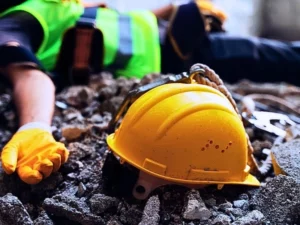The American workforce has changed substantially during recent decades. Many people in earlier generations could expect to stay with one company for many years and enjoy an uncomplicated retirement. This pattern is now the exception rather than the rule. Businesses have sought to cut costs by employing more temporary workers and subcontractors. People often work for a number of different employers in a single year.

The practice of using temporary workers can make business easier for employers, but it can be dangerous for Chicago workers, as a personal injury lawyer can confirm from countless cases. Recent research by the U.S. Occupational Safety and Health Administration shows that temporary workers have a consistently higher rate of injury on the job. An investigation of their working conditions can help reveal the reason for this discrepancy.
How many temporary workers are currently active in America?
According to current data compiled by the U.S. Bureau of Labor Statistics, there were more than 2,877,700 people working temporary jobs in America during April 2015, the most recent month for which figures are available. This figure has reached an all-time high, exceeding the previous figures before the economic crash of 2009 and the resulting rise in overall unemployment.
BLS figures only show the number of people who are engaged in legal and documented temporary work. These figures conceal the additional group of workers who are employed illegally or engaged as undocumented subcontractors. This group is large and may be employed in even less safe conditions. The official statistics on temporary workers also exclude a significant number of contingent employees—as many as 3 million, according to a recent BLS report—who consider their jobs to be temporary or do not expect their jobs to continue past a set date in the future.
(Article continues below Infographic)

Risk factors for danger to temporary workers
OSHA studies show that temporary workers are consistently exposed to poor working conditions. Thousands of temporary employees are hurt on the job every month, many of them seriously enough to require time off work. According to recent reports by OSHA, the major risk factors for temporary employees include the following:
- Lack of attention to safety procedures and rules
- Lack of proper training programs
- Missing or inappropriate safety equipment
- Insufficient experience
- Reluctance among workers to turn down unsafe jobs
The last of these factors is especially acute among temporary and contingent workers. When people fear for the loss of their job, they are less likely to speak up when asked to do an unsafe task or to work without the correct safety equipment. Personal injury lawyers in Chicago are aware that silence in such cases can lead to serious injury or death.
A recent case of tragedy on the job
One case highlighted in recent OSHA research shows the threats faced by many temporary workers. An inexperienced 28-year-old construction worker was assigned by a staffing firm to do a restoration job on a large building in New York City. He was not given equipment to prevent an accidental fall, and he was not trained in preventing falls. On the first day of his job, he fell from a height of 40 feet and was killed. This pattern of employer negligence and fatal injury is all too common among temporary employees.
Reporting injuries among temporary workers
When employers make use of contract workers or temporary workers, they must be aware of the correct procedures for reporting injuries. Many injuries among contingent staff go unreported and unrecognized because the employer or the agency does not know how to keep correct records. In some cases, employers may fear double-counting injuries.
When a temporary worker is hurt on the job, it is normally the duty of the host employer to report the injury, according to OSHA rules. If the staffing agency or the subcontractor has personnel present on the worksite who directly supervise the workers, the agency’s personnel should record the injury. In many cases, agency personnel on site (when they are present) are doing administrative duty only, leaving the task of job supervision to the host employer. The administrative staff is never directly responsible for reporting injuries. Only supervisors are responsible.
Staffing firms and temporary work agencies have responsibilities
As more and more workers spend time in the employment of temporary work agencies and staffing firms, these firms must become aware of their own safety responsibilities. A firm that provides workers to other businesses has not given up the duty of teaching safety awareness to its own employees.
According to OSHA guidelines, staffing firms must take responsibility for workers in all of the following ways:
- Understanding the hazards of jobs assigned to temporary employees
- Offering general safety training to all temporary employees, regardless of the jobs they will take during their time with the firm
- Encouraging awareness of safety and health regulations
- Ensuring proper training before assigning temporary workers to dangerous jobs
- Communicating clearly with all temporary workers, even when language barriers may be present
OSHA regulations allow citation of temporary work providers and staffing firms if an employee is injured on a new job because of insufficient training. Unfortunately, such citations come too late for the injured worker.
Working together for greater safety
In today’s changing economic climate, businesses and staffing agencies must work together to provide safer conditions for the growing number of temporary employees. People who have been hurt during a temporary job assignment have rights. Disabled temp workers in Chicago may wish to contact a personal injury lawyer to learn more about their options.







